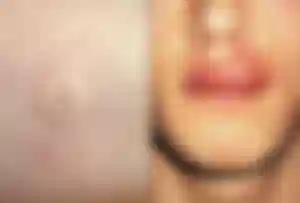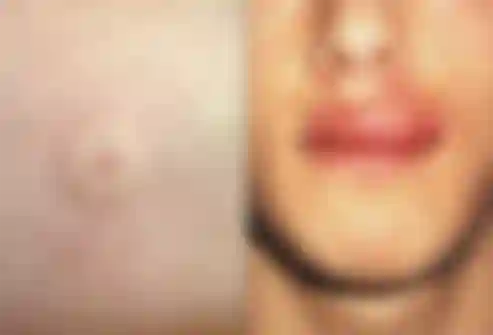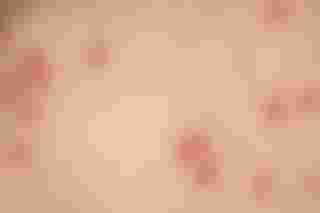Wasp stings are common, especially during the warmer months when people are outside for longer periods of time. They can be uncomfortable, but most people recover quickly and without complications.
Wasps, like bees and hornets, are equipped with a stinger for self-defense. A wasp’s stinger contains venom (a poisonous substance) that’s transmitted to humans during a sting.
However, even without a lodged stinger, wasp venom can cause significant pain and irritation. It’s also possible to have a serious reaction if you’re allergic to the venom. In either case, prompt treatment is important for alleviating symptoms and complications.
Symptoms of a wasp sting
The majority of people without sting allergies will show only minor symptoms during and after a wasp sting. The initial sensations can include sharp pain or burning at the sting site. Redness, swelling, and itching can occur as well.
Normal local reactions
You’re likely to develop a raised welt around the sting site. A tiny white mark may be visible in the middle of the welt where the stinger punctured your skin. Usually, the pain and swelling recedes within several hours of being stung.

Large local reactions
“Large local reactions” is a term used to describe more pronounced symptoms associated with a wasp or bee sting. People who have large local reactions may be allergic to wasp stings, but they don’t experience life-threatening symptoms, such as anaphylactic shock.
Large local reactions to wasp stings include extreme redness and swelling that increases for two or three days after the sting. Nausea and vomiting can also occur.

Most of the time, large local reactions subside on their own over the course of a week or so.
Let your doctor know if you have a large local reaction after a wasp sting. They may direct you to take an over-the-counter (OTC) antihistamine medication (such as Benadryl) to reduce your discomfort.
Having a large local reaction after a wasp sting one time doesn’t necessarily mean you’ll react to future stings in the same way.
You could have one strong reaction and never show the same symptoms again. However, a large local reaction could be the way your body routinely responds to wasp stings.
Try to avoid being stung to prevent these uncomfortable symptoms.
Anaphylaxis following a wasp sting
The most severe allergic reactions to wasp stings are referred to as anaphylaxis.
Anaphylaxis occurs when your body goes into shock in response to wasp venom. Most people who go into shock after a wasp sting do so very quickly. It’s important to seek immediate emergency care to treat anaphylaxis.
Symptoms of a severe allergic reaction to wasp stings include:
severe swelling of the face, lips, or throat
hives or itching in areas of the body not affected by the sting
breathing difficulties, such as wheezing or gasping
sudden drop in blood pressure
loss of consciousness
nausea or vomiting
You may not experience all of these symptoms after a wasp sting, but you’re likely to experience at least some of them after a subsequent sting.
If you have a history of anaphylaxis, carry a kit in the event of a wasp sting.
“Bee sting kits” contain epinephrine injections (EpiPen) that you can give yourself after a wasp sting. Epinephrine has several effects that help stabilize the blood pressure, increase the heart rate and strength, and help respiration return to normal.
Anaphylactic shock is a medical emergency that requires immediate treatment.
Treating wasp stings
Mild to moderate reactions
You can treat mild and moderate reactions to wasp stings at home. While treating your sting at home, you should:
Wash the sting area with soap and water to remove as much of the venom as possible.
Apply a cold pack to the wound site to reduce swelling and pain.
Keep the wound clean and dry to prevent infection.
Cover with a bandage if desired.
Use hydrocortisone cream or calamine lotion if itching or skin irritation becomes bothersome. Baking soda and colloidal oatmeal are soothing to the skin and can be used during a bath or through medicated skin creams.
OTC pain relievers, such as ibuprofen, can manage pain associated with wasp stings.
Antihistamine drugs, including diphenhydramine and chlorpheniramine, can reduce itching as well. Take all medications as directed to avoid potential side effects, such as stomach irritation or drowsiness.
You should also consider getting a tetanus shot within several days of the sting if you haven’t had a booster shot in the last 10 years.

Vinegar
Vinegar is another possible home remedy that may be used for wasp stings. The theory is that the acidity of vinegar can help neutralize the alkalinity of wasp stings. The opposite is true of bee stings, which are more acidic.
To use vinegar on wasp stings, soak a cotton ball with apple cider or white vinegar and place it on top of the affected area of skin. Use slight pressure to help with the pain and inflammation. You can leave the cotton ball on top of your skin for several minutes.
Severe reactions
Severe allergic reactions to wasp stings require immediate medical attention. Overall, up to 0.8 percent of children and 3 percent of adults have insect sting allergies.
If you have an EpiPen, administer it as soon as symptoms begin. If you have a history of wasp allergies, administer the EpiPen as soon as you’re stung and then call 911.
Treatment for severe allergic reactions to wasp stings can include:
additional epinephrine to calm your immune system
cardiopulmonary resuscitation (CPR) if breathing has temporarily stopped
oxygen, steroids, or other medications to improve breathing




